Graham Reid | | 13 min read
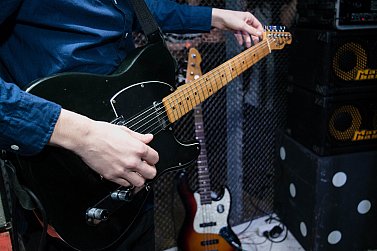
One of the most important skills every guitarist has to learn is guitar tuning. It is necessary to tune the guitar almost every time you play, and trust me, you don’t want to give your axe to the guitar master every day for that. Why? Cause it’s not as tricky as you think!
Tuning is no rocket science, and here I’m gonna cover all the important things you need to know to tune your axe like a rockstar, from the classic EADGBE standard guitar tuning, classic and alternative ways of tunings, different factors that affect the tuning, and, of course, tips on how to keep the tune longer.
STANDARD GUITAR TUNING: EADGBE
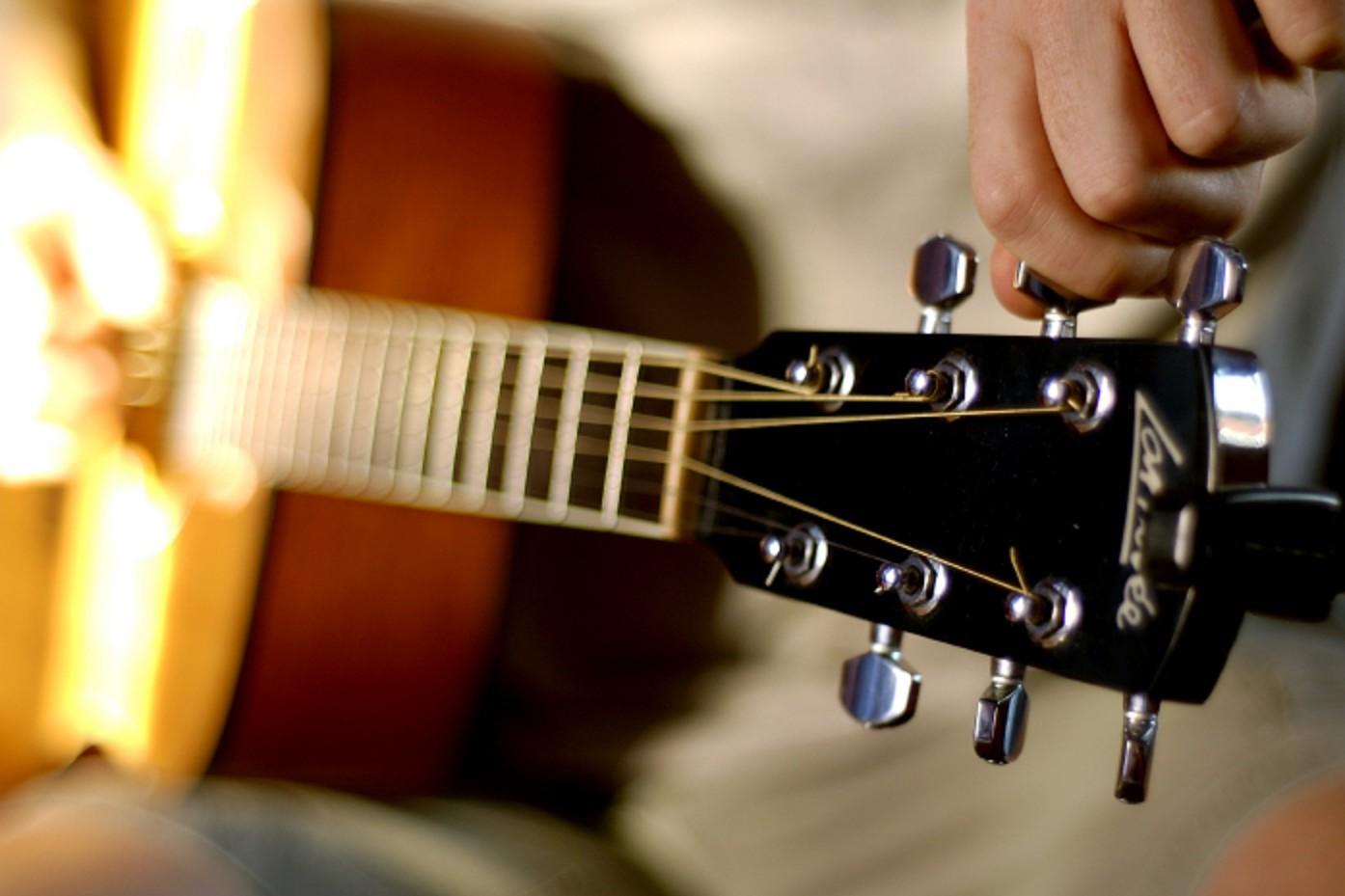
The standard tuning, hence the name, is the most popular guitar tuning style among guitarists. It defines guitar strings as specific notes – EADGBE (from lowest E to highest E). If you are looking at your 6-string guitar from the top, the lowest E (the 6th string) will be on the far left, and the highest E on the far right, with the other strings in between.
There are, of course, different types of tuning, and you’d be right to ask why the EADGBE tuning is considered to be the “standard” for guitar playing. In fact, it was made due to the convenience of these scales.
Way back in the 16th century Spain, the classic 5-string “chitara” (guitar) was tuned to the ADGBE.Tuning the 2d (B) and 3d (G) strings to a major third interval made fingering style of play easier. Other strings used perfect fourths. Thus, when the 6-string guitars came around, an extra E (6th string) was added as another perfect fourth.
EADGBE is also extremely practical. These pitches are the most common ones that are used for playing the most popular chords and scales. This tuning also simplifies the alteration between guitar passages on the fret or, in other words, it reduces the time it takes to change from one chord to another.
However, tuning the guitar doesn’t mean that you make the thickest string sound like an E. Instead, you are calibrating the string to the frequency it belongs to. The guitar frequency is measured in Hz (Hertz).
In general, both standard and alternative tunings use the A4 pitch with a 440Hz frequency as the pitch standard. Basically, pitch standard acts as a tuning reference or a measure to make sure that all pitches sound perfect and in tune. Most instruments are tuned to the A4 or A440 pitch as a reference point.
Yet, not every guitar string has a 440Hz frequency. In fact, each has its own and has to be tuned to these exact numbers to sound perfect. Here’s how it looks:
-
E = 329.63 Hz
-
B = 246.94 Hz
-
G = 196.00 Hz
-
D = 146.83 Hz
-
A = 110.00 Hz
-
E = 82.41 Hz
But how can you actually do the tuning? Well, in fact, there are many different options.
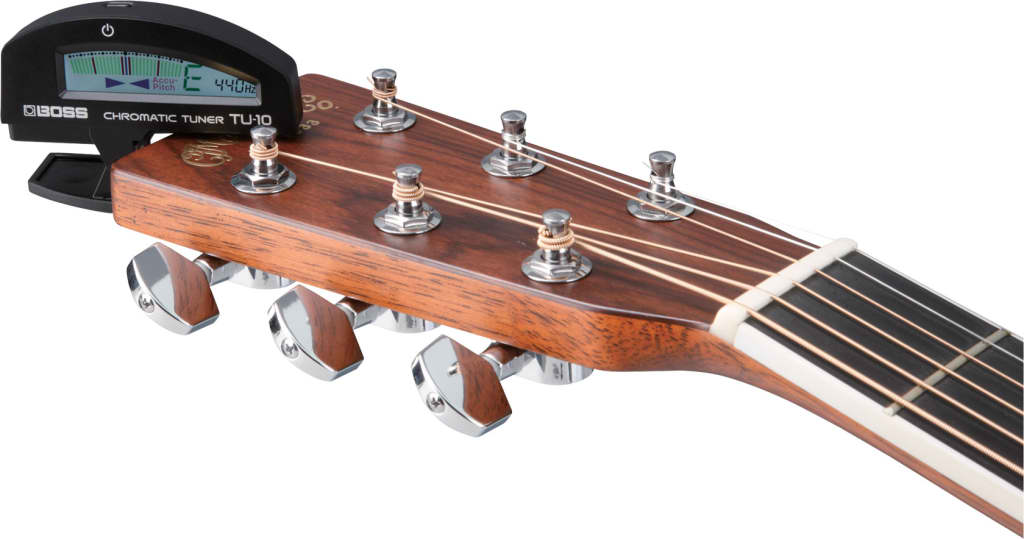
There is no easier way to tune a guitar than with a tuner. To put in bluntly, an electronic tuner is a device that captures the frequency of the sounds, detects the played note, and shows the pitch of the string on the screen. The tuners usually have a screen divided into two parts. If the indicator is to the far left, it means that the sound is too low. If it’s far-right – it’s way too high. Your task is to bring the indicator right to the middle.
Some tuners only show the pitches of the standard guitar tuning (EADGBE), but more expensive ones can tell you a bit more. They can autodetect what string you are trying to tune; the exact note you are playing; how far away you are from the perfect note; and when the pitch is perfect.
There are a bunch of different tuners out there, so here is a little list of the most popular options to simplify the choice.
Chromatic/non-chromatic tuners – to start off with, the two main types of tuners are chromatic and non-chromatic. Chromatic tuners can be used to tune guitars to any pitch you want, thus making it suitable for the alternative types of tuning. The latter, means that these kinds of tuners only tune to the standard guitar tuning – EADGBE.
Vibration-based (clip-on tuners) – detect the pitch through vibrations while attached to the head of the guitar. They can be used for both acoustic and electric guitars and work perfectly in any place and at any time, regardless of space and surrounding noise. Just place it on your lap and tune away.
Microphone-based tuners – pick up the sound through the built-in microphone. They can be used for acoustic guitars, and electric guitars if there is a ‘Jack’ input. Unfortunately, it’s not as portable and ubiquitous as the vibration tuners. They can’t be used in a loud place, as they won’t be able to pick up the note’s pitch clearly.
Tuner Pedal – these tuners work exclusively on electric or electro-acoustic guitars. They even look exactly like the normal electric guitar pedals and cost just as much. However, they operate like any other tuner and are most accurate out there. If you plan to be a professional guitarist, you might want to invest in a pedal, which will be the ideal addition to your pedalboard.
Guitar tuning app – is the cheapest and easiest option to acquire out there. It’s free and can be downloaded to your phone at any time. They work exactly like the microphone-based tuners. However, the quality of the microphone might not be ideal and, consequently, the quality of the tuning. Just make sure your phone is charged and is good enough; you’ll literally have a tuner in your pocket.
TUNING A GUITAR WITHOUT A TUNER

Tuning a guitar with a tuner is a bulletproof way to make your guitar sound perfect. However, there is one serious downside – a tuner can break, you can forget it at the studio, and your phone can run out of charge. It leaves you helpless when you urgently need to tune the guitar. Fear not though, musicians had tuned guitars long before electronic tuners came on the scene. There are several different techniques, and I’d strongly recommend learning at least one, to ensure you’ll never find yourself hanging.
TUNING A GUITAR BY EAR (THE 6TH STRING)
The most common and old-fashioned way is to tune the guitar by ear, or to “tune it to itself.” The way it works is that you take the 6th string as a reference point, and tune the strings from low E to high E, one by one. You don’t necessarily need to tune the 6th string; you can simply ‘presume’ it sounds exactly as it should. As soon as you find your low E, you can start working on the 5th string.
The easiest way is to match the pitch of the open 5th string to the 6th string, and then tweak the sound by turning the machine head, and continuously plucking both strings in open and closed positions at the 5th fret to listen to how the pitch changes. Repeat that until the 5th string is in tune and sounds like a perfect “A” note. You’ll know it’s in tune when there is no ‘warbling’ sound, and the pitch sounds nice, clean, and strong.
As soon as this is done, repeat the same process by tuning the next string to the previous one: 5 to 6, 4 to 5, 3 to 4 and etc. Bear in mind; every string is tuned on the 5th fret, except for the 2d string, which is tuned at the 4th fret.
There is a severe problem with this method, as you must rely only on your own sense of pitch. As you base your tuning on the sound of the 6th string, if you chose the wrong pitch for the low E the guitar will be entirely out of tune with other instruments. This is particularly unfortunate if you are playing in a band, so make sure that your guitar will sound in tune with their instruments before you start playing.
To start with, what are harmonics here? Harmonics are simply the overtones at fixed intervals. In a way, this tuning method is similar to tuning by the 6th string, but here you follow the sound of harmonics. The sound of harmonics is most evident at the 5th, 7th, and 12th frets. To get this sound, you need to lightly pluck the string right above the mentioned frets.
You should also start with the 6th string and tune the 5th string to it. But here you should match the harmonics at the 5th fret of the 6th string to the harmonics of the 7th fret of the 5th string. You need to make sure that the two strings sound precisely the same. Then you repeat the same process with the other pairs of strings:
-
5th string (5th fret) & 4th string (7th fret)
-
4th string (5th fret) & 3d string (7th fret)
-
6th string (7th fret) & open 2d string
-
5th string (7th fret) & open 1st string
This tuning has similar issues to the adjustment using the 6th string. It’s easy to mismatch the sounds and tuned guitar might be out of tune with the A440 standard. Yet, it will be perfectly in tune with itself in a harmonic tuning. You can still play the guitar in harmonic tuning, as long as it fits your music and style of play.
TUNING A GUITAR BY USING A TUNING FORK
Using a tuning fork is a great way to simplify the tuning by ear methods mentioned earlier by matching the guitar to the A440 standard. This happens because the tuning forks usually sound at the A440Hz, which allows you to achieve the perfect sounding A note on your guitar.
While the fork rings at A note, you should hold the fork at the base (its thickest part) and whack it on something hard (like a table, a wall or an amp). Hold the base of the fork against an even surface (like the guitar’s main body) to let it ring and immediately play the open 5th string. Keep turning the appropriate machine head until the A-note is perfect. After that’s done, you can start tuning other strings using the harmonics, or classic 6th string methods.
TUNING A GUITAR WITH ANOTHER INSTRUMENT
A pretty straightforward way of tuning is to match the low E to the sound of another tuned instrument. It can be another guitar or a piano, whatever you have close to you. First up, find the note E on the keyboard (it will be the E note in the second octave from the left) and tune the open 6th string to it. As long as it’s done, follow it by either tuning by ear or tuning with harmonics to finish tuning the guitar.
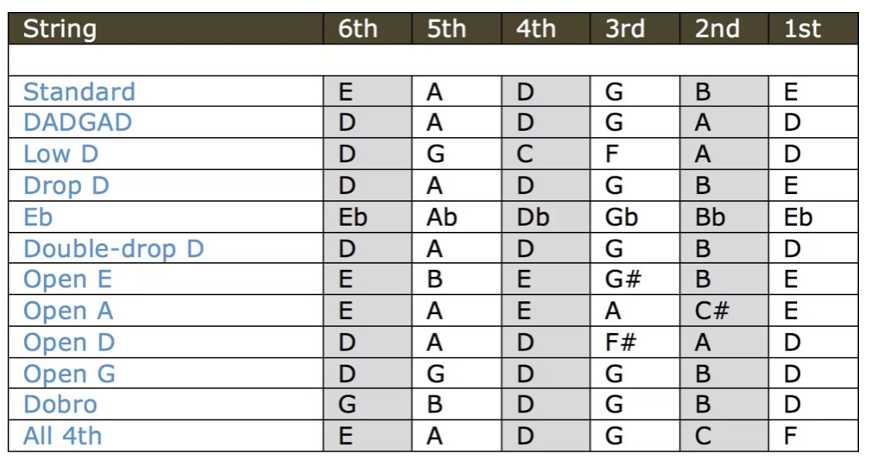
Yet, not every guitarist prefers to play in standard EADGBE tuning. Some find it blank and boring; others just want some diversity or crave a unique sound. This led to the appearance of alternative tunings, or simply, any tuning that uses a sound arrangement different from the EADGBE tuning. There is an infinite number of tunings that one can use; it is entirely up to your improvisation and creativity. However, there are few widely used alternative tunings such as drop tuning and open tuning.
DROP TUNING (DROP D, DROP C, DROP B, DROP A, DROP E, ETC.)
Drop tuning is a common definition for all tuning methods that ‘drop’ (lower) note of a single string, in the standard EADGBE tuning arrangement. The most popular way is the Drop-D, which means that the low E becomes a low D (exactly an octave lower than the 4th string). This is widely used in heavy metal and rock, as it gives you a deeper, richer sound. You can also drop a C, B or even double D (by lowering the low E an octave lower, and high E to the D in the same octave).
OPEN TUNING (OPEN D, OPEN C, OPEN G, OPEN A, ETC.)
The open tunings require open strings to be tuned to a particular chord. In other words, an axe is tuned in a way that it produces the sound of a chord when strummed. This is particularly common for the folk and blues genres and mostly uses major chords from Open D, E A, and C6, etc. I’d say this tuning is ideal to use for a specific song, that is played in the chord’s key.
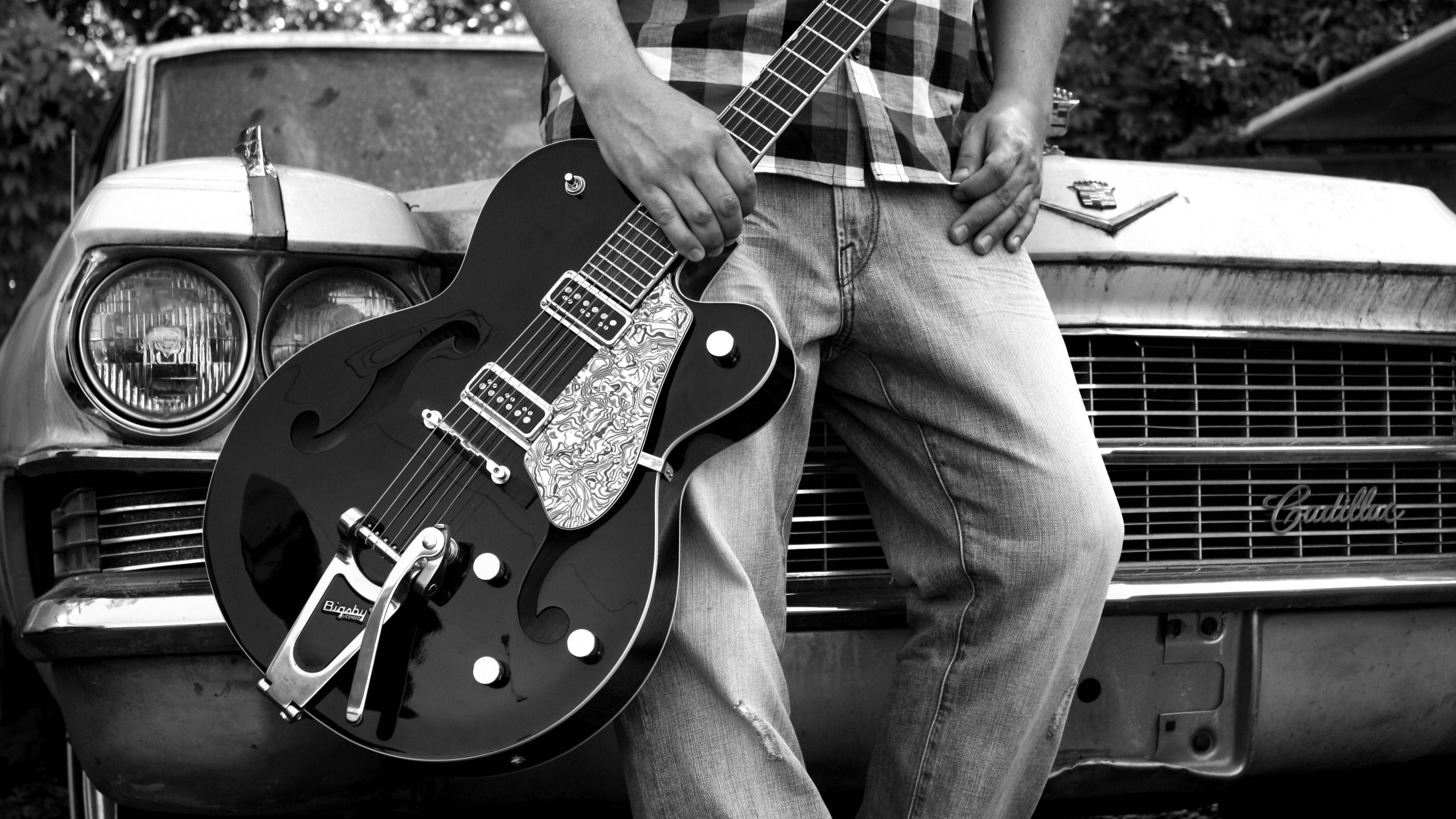
The biggest issue of tuning is that it doesn’t last forever, and it will eventually go out of tune.
Some guitars go out of tune extremely fast; others stay in tune forever. It is obligatory to tune it before a gig or studio recording. Yet, I’d strongly recommend tuning it every time you are about to play, even if it was entirely in tune the last time you played it. You should at least check if it’s in tune before practicing. Check a couple of times while playing and tweak the strings, here and there, to achieve the perfect sound.
There are many factors that can cause a guitar to go out of tune, from bad tuning, poor quality strings, or even the type of guitar. Guitars are sensitive instruments and can go out of tune for a variety of reasons. They are made of wood and are extremely sensitive to temperature changes and humidity. They are also affected by how often you play. Active shredding, or long hours of playing, weaken the strings and wear out the guitar. Here are a few things you need to look out for when playing:
-
Stability of tuning – high quality, and usually more expensive guitars, often produce sturdiness of sound which makes the tuning last longer. Machine pegs hold the strings better, and long hours of playing won’t affect the sound as much. Yet, bad quality guitars go out of tune significantly faster.
-
Humidity – both electric and acoustic guitars are made of wood, and even the thickest water-resistant polish won’t give them 100% protection from humidity. The neck and body absorb the moisture in the air, just like a sponge, making it expand. It shifts the positions of the strings and weakens the tensions created by the bridge and machine heads, and in return, the guitar loses the tune.
-
Quality of Strings – old or bad quality guitars go out of tune very quickly, and sometimes break all of a sudden. If you often tune the guitar from a complete state of worn-out strings, you should change them more often. Thus, it will stay in tune longer.
-
Quality of ‘Machine Heads’ – similar to the overall quality of the guitar, the machine heads at the top of the fret, must hold the strings very tightly. Otherwise, if the strings are not held well enough, the guitar can easily go out of tune.
-
Bridge Type – some bridges, like Floyd rose, are very tricky to tune, and strings can suddenly fall out of place during active shredding.
HOW CAN I MAKE MY GUITAR STAY IN TUNE LONGER?

Guitars can quickly go out of tune, but there are some things you can do to prevent this from happening.
-
Quality of parts – make sure that strings, the machine heads and bridges are new and in good quality;
-
Correct set up – strings should be set up correctly, so they do not fall out of place;
-
Keeping parts clean – they also should be cleaned frequently at the points where you touched the guitar;
-
Friction prevention – frequent playing causes friction, which damages the surface and position of strings. So, always check if these spots are clean and prevent the strings from moving.

Tuning a guitar might sound like a crazy difficult task, but the more you practice, the easier it gets. If you are a complete beginner, I strongly recommend to stick to the standard EADGBE tuning and using an electric tuner. After you’ve mastered the standard tunings, you are good to learn the alternative tunings.
All electric tuners, both chromatic and non-chromatic, allow you to tune the guitar to EADGBE. Yet, to avoid any conundrums, I suggest to get yourself and actual device (Clip on tuners or Tuner pedals are usually the best); and a guitar app, which comes in handy if you forgot the tuner somewhere.
It is also important to learn one of two ways of tuning by ear. Tuning to the other instruments are the easiest, as you have an actual reference note for each string. However, I’d recommend learning to tune from the 6th strings, as it helps you develop a sense of pitch.
Do remember, guitars go out of tune for many reasons, from humidity to traveling. Thus, it is strongly recommended to tune your axe every time you pick up the guitar or at least check if it’s in tune. To lengthen the stability tuning, make sure the guitar and its parts are clean and undamaged.
Max Hudson was born and raised in Chicago. He is 30 years old and like many other people, discovered guitar in his teens and has never looked back. It has quickly evolved into a passion and has given him a creative outlet, something to redirect his time and unlimited energy toward.
He wants his website to be a handbook for players of all skill levels. It can become a starting point for your new hobby, where you can find the right instrument, get tips for playing effortlessly or anything else music related.
His website Best Electric Guitar Reviews is here. Check it out.
This article and its images have been reproduced from the BEGR site with Max's permission
Other Voices Other Rooms is an opportunity for Elsewhere readers to contribute their ideas, passions, interests and opinions about whatever takes their fancy. Elsewhere welcomes travel stories, think pieces, essays about readers' research or hobbies etc etc. Nail it in 1000 words of fewer and contact graham.reid@elsewhere.co.nz.
See here for previous contributors' work. It is wide-ranging

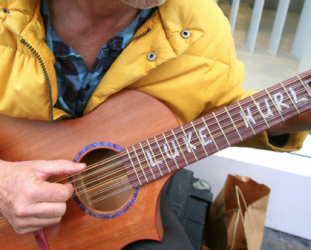



post a comment